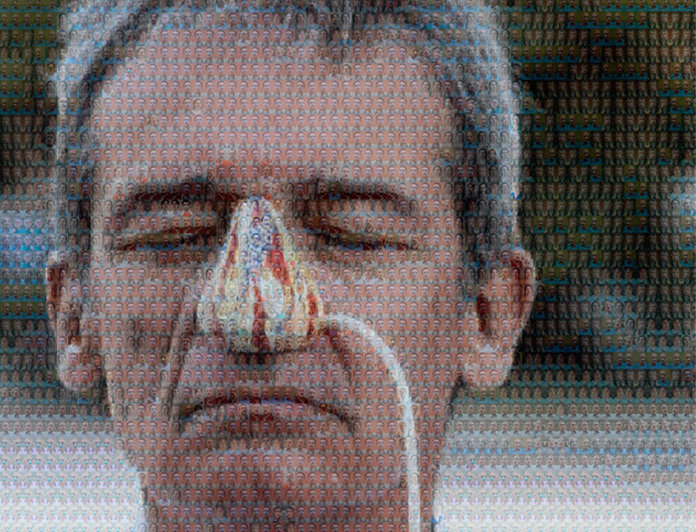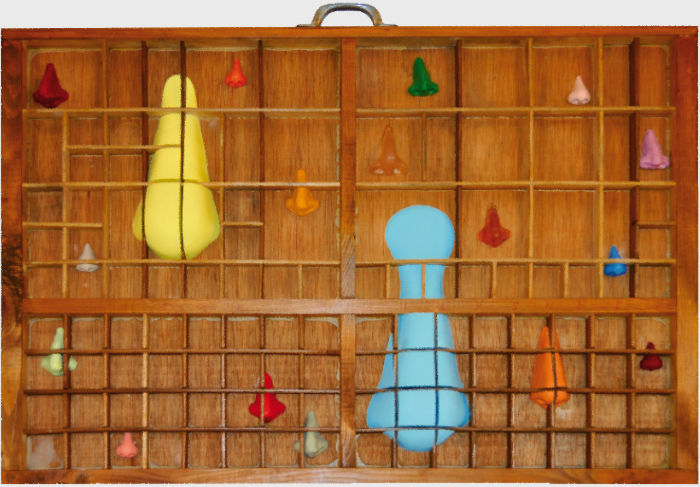Biographical Note
THE ARTIST
NASEVO is the name of an artist, or more precisely the half-concealed artistic nom de plume of Ernesto Ventós, who in his professional capacity is a highly acclaimed creator of essences and, by passionate conviction, a very special kind of collector: deaf since he was a boy, instead of just looking at works of visual art he smells them as he looks. (colección olorVISUAL)
By means of these works we move from sight to smell and from there to the dialectic of sensory reason by way of the artistic object. These works are artistic objects and at the same time linguistic objects: an archetype, the nose; a semantics, smell-colour, and a container, the styles and forms of art.
In his own remarkable way, NASEVO brings to the world the distillations of the knowledge of Ernesto Ventós with the spirit of the alchemist, the magician and the conjurer.

THE SMELL OF THE NEIGHBOURHOOD
Walking through a neighbourhood and breathing in its different smells we can guess at the influence these notes have on the characters of the people who live there, and with the passage of time we become increasingly conscious of how strongly our memory of the places we visit is associated with their smells, and also with the weather, the temperature and the time of year. A sunny day smells different from an overcast one, heat smells different from cold, and summer different from winter, and without our being aware of it, each situation, with its particular nice or nasty smell, fixes the details of the lived moment in our memory. Just one chord is enough to activate the recollection.
There are funny and unfinished neighbourhood smells, with a style that is all their own, where the tang of fresh cat urine and hot pepper wafted on the breeze rubs up against walls and railings, impregnating them and mixing with the different notes that escape from bakeries, hardware stores and bars; the smell of bread, naphthalene and alcohol, which sketch their different sensations in the air in lines that are firm and sure, colourful and exciting, as full of life and sensuality as a Cubist drawing.

THE COMMITMENT TO NATURE
Of the five senses with which we human beings have been endowed by nature, the senses with which we live our lives, smell is probably the hardest to pin down and, at the same time, the one with the longest reach. In contrast to the other senses, whose expression is confined within narrow limits of temporal and spatial proximity, smell casts off the shackles of time and space: of time, because smell is a maker of memory, and of space because it transcends even physical proximity. In other words, smell gives us the freedom to be and to express ourselves.
Art has the power to abstract our everyday consciousness, to enhance the harmony of the senses and to recall and connect us with our inner space. To do this it uses the senses: not just the closest ones – touch, sight, taste and hearing – but also the furthest, smell.
Does the planet smell? Of course it does. Everything in life has a smell, but we human beings are so accustomed to the fact of smelling that we often don’t really pay attention to it. But just as we can’t stop breathing or we will die, we can never, as long as we live, do without smelling. The spirit of our civilization wants to commit itself to nature, respecting it and conserving it, in the knowledge that nature is the best legacy that we can transmit to our descendants.

